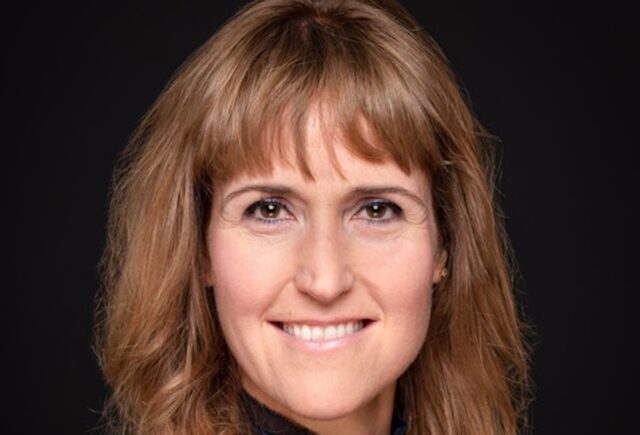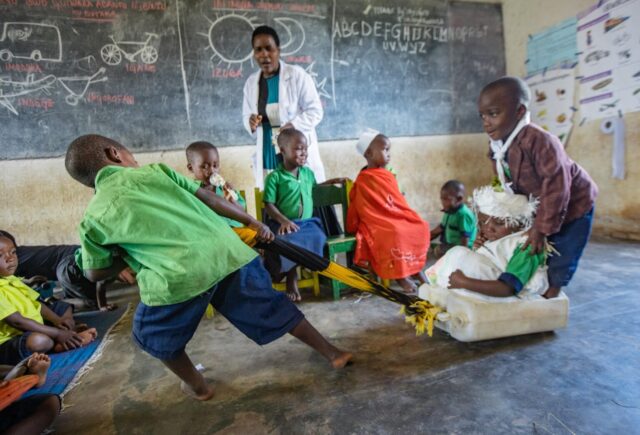Blended finance is mobilising private investment to meet development aims, but it needs to be part of a wider toolbox of support from national and supra-national bodies, World Economic Forum delegates heard.

Blended finance has emerged as a key tool in directing private capital towards development goals, but has failed to scale fast enough to make up the global shortfalls in funding needed to meet those objectives, panellists told delegates attending last week’s World Economic Forum (WEF) in Davos.
Blended finance deals reached a five-year high in 2023, growing to $15bn (€13.9bn) as multilateral development banks (MDBs) and development finance institutions (DFIs) stepped up efforts to tackle climate change and social inequity. However, that figure is dwarfed by the development financing gap, which the UN has estimated stands at over $4trn.
Jon Johnsen, CEO of Danish health and social workers pension fund PKA, said a strategy developed by Danish pension funds and the Danish government shows how blended finance initiatives could work successfully.
Under the strategy, the Danish SDG Investment Fund invests to further progress towards the UN Sustainable Development Goals. The first fund, launched in 2018, has been fully invested. A second fund reached a first close of DKK 2.7bn (€362m) in November 2024.
By co-investing and taking on early-stage risk for investments, the government was able to bring in institutions for which the risk of such investments would have been too high for them to contemplate as individual entities. The government was also able to provide the investment team and other expertise required for a successful fund.
“Being a Danish pension fund, we would never have the competences or the ability to build our own team to do these types of investments. It’s too complex,” he said.
During the panel discussion entitled ‘Blended Finance’s Broken Promise and How to Fix It’, Johnsen explained he believes initiatives such as the Danish SDG Investment Fund can provide a template for others involving MDBs.
“What I really hope for is that the structure that we have developed, the Danish pension funds and Danish government, could be transferred to get some of the MDBs to do first losses, risk capital and so on. Maybe we can scale it even more,” he said.
Broader perspective
Odile Françoise Renaud-Basso, president, European Bank for Reconstruction and Development (EBRD), told delegates blended finance measures such as the assumption of first loss risk by DFIs and MDBs were an important part of the equation in terms of unlocking climate finance. However, she said they were too costly to scale up to the extent that blended finance should be regarded as the main solution for realising development goals.
“If we really want to make progress, we need to look at the whole picture, and that’s very much where MDBs also can contribute,” she said.
Renaud-Basso said MDBs were well placed to work with countries to help implement policies to unlock large-scale investment opportunities. Encouraging the growth of local capital markets, which would provide an alternative to savings being invested abroad, and reducing currency risk were also among avenues where MDBs could play a role.
Hayashi Nobumitsu, governor of Japan Bank for International Cooperation (JBIC), the state finance institution and export credit agency, agreed on the wider role that institutions could play.
He said JBIC’s role in supporting Japanese companies’ activities overseas goes beyond pure investment considerations, to also involve finding ways to collaborate with foreign governments and national development banks on issues such as improving local regulatory frameworks, or supporting host countries that may not have the relevant expertise to execute large, expensive projects required in areas such as clean energy.
Complex risk assessment
Nobumitsu said it could be difficult to assess whether being the first loss investor in projects such as renewable energy developments would actually be catalytic in attracting other investors, or whether they would have been commercially viable without that support. At the other end of the spectrum, JBIC also has to assess whether projects that do require support might be too risky to finance, even if their development goals were attractive.
Financing for geothermal energy projects was a case in point, he said, adding that he benefits in terms of decarbonisation are high, but so is the risk, as it is difficult to assess how much heat or steam a given project would produce before it becomes operational. However, concerns could be mitigated by spreading the risk.
“I am not saying I am averse to blended finance. We take advantage when there are those who can give grants or concessional money,” Nobumitsu said.
In January, JBIC signed an agreement to co-finance the Muara Laboh geothermal power expansion project in Indonesia with the Asian Development Bank, along with a group of Japanese banks. Total co-financing amounted to around $370m, with Nippon Export and Investment Insurance (NEXI) insuring the loan from the private institutions.
Leila Fourie, group CEO of the Johannesburg Stock Exchange, said a crisis is often the forerunner to greater cooperation between diverse actors. In South Africa, unreliable power supply, the need to transition to renewable energy from reliance on coal-fired power, and a chronic water storage has driven greater collaboration between public and private sector infrastructure developers and investors.
“This has created a tremendous coalition of the willing, where we’ve started to see a genuine trust build up between our public and private sectors,” she said.





